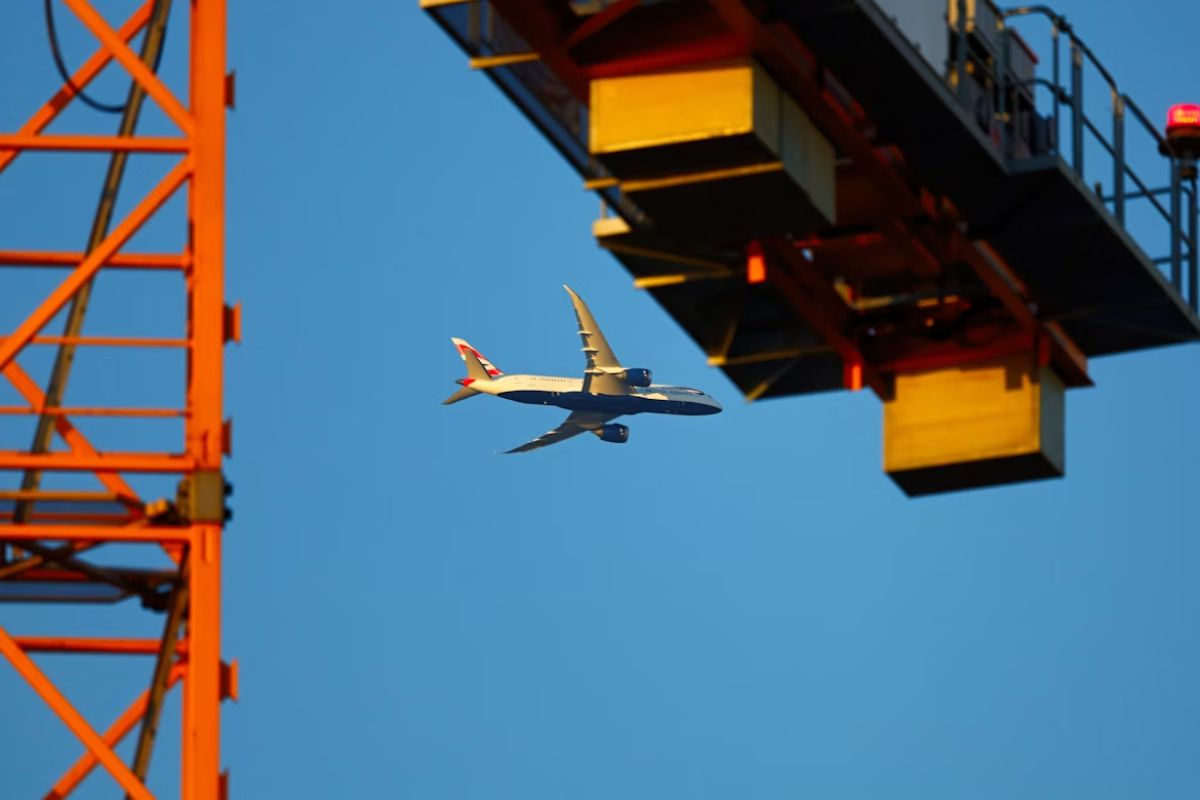If you’ve ever watched a plane taxi and thought about the millions of tiny parts that had to come together just to make it move – it’s kind of mind-bending. Aerospace has always lived on the edge of impossible logistics. Thousands of suppliers, decades-old systems, and a zero-error tolerance. Yet somehow, it works… until it doesn’t. The last few years have tested that whole structure – global delays, shortages, political chaos – and it’s forced the industry to admit that the “old way” just can’t keep up anymore.
As Ryder put it in their overview of the state of aerospace supply chains, everything from materials to maintenance is being re-engineered right now. The pressure’s on for systems that can adapt in real time – predicting issues before they cause a domino effect. The funny thing is, this isn’t really about hardware anymore. It’s about data, foresight, and trust. And five technologies, in particular, are quietly redrawing the map of how planes are built, serviced, and kept in the sky.
1. Artificial Intelligence: From Guesswork to Foresight
AI has stopped being a buzzword and started doing the heavy lifting. In aerospace, it’s basically the industry’s new early-warning radar. By crunching years of flight and maintenance data, AI systems can spot patterns that humans would miss. Airbus showed this beautifully through its A350 program, where predictive maintenance using AI allowed engineers to fix potential problems before they grounded aircraft. The result? Less downtime, fewer delays, and calmer fleet managers.
But it’s not just about fixing things early. AI is starting to make broader supply-chain calls too – like identifying which supplier is about to miss a delivery or which component’s cost curve is about to spike. Some systems even simulate different sourcing routes, almost like a game of chess. Every move is a lesson. Every delay becomes new data to improve the next decision. It’s imperfect, sure, but the learning never stops – and that’s the magic of it.
2. Digital Twins: The Mirror World of Aerospace
Imagine running a virtual version of your entire supply chain, every plane, every part, every truck – and seeing the ripple effect of a delay before it even happens. That’s what digital twins do. They’re not just 3D models; they’re living, data-fed simulations that can stress-test reality. As McKinsey explained in their deep dive on digital twins, the concept lets companies experiment safely before making costly real-world changes.
For aerospace, this means predicting how one small tweak in design or scheduling can cascade across factories, suppliers, and airports. Rolls-Royce uses similar ideas to monitor engine health, feeding real-time performance data into digital twins that help engineers decide when to pull a part or keep it flying. It’s oddly poetic – a virtual reflection that keeps the physical world running smoother. The line between what’s “real” and what’s modeled is getting pretty thin.
3. Blockchain: Because Trust Still Matters
Here’s a thing about aerospace: a single screw could come from ten different countries, and nobody wants to find out halfway through that one was fake. That’s where blockchain sneaks in. It’s not glamorous, but it’s quietly solving the nightmare of traceability. Each component gets a digital paper trail – who made it, when, how it was tested, and where it’s been since.
Honeywell already runs a blockchain-based marketplace for used aircraft parts, giving buyers confidence that what they’re installing won’t come back to haunt them later. The beauty of it? You don’t need to trust every supplier, because the system itself enforces it. It’s like having an incorruptible ledger keeping everyone honest. And when the stakes are thousands of lives and billions in assets, that’s not optional.
4. Additive Manufacturing: Printing Freedom
The phrase “supply chain disruption” became so common it almost lost meaning – until aerospace got caught in the middle of it. Waiting months for replacement parts? Nightmare. That’s why 3D printing (or additive manufacturing) is finally getting its moment. Instead of shipping a simple bracket halfway around the world, companies can now print one on site in a matter of hours.
GE Aviation was one of the early pioneers – printing complex fuel nozzles that used to require 20 separate pieces. Lighter, cheaper, stronger. Rolls-Royce too. And beyond cost, it’s the flexibility that’s addictive. Change the design? No problem. Need a small batch? Print it. For an industry obsessed with precision, this is quietly revolutionary. It also helps the planet a bit – fewer planes hauling parts around, less waste, smaller carbon footprint. Feels like progress that actually makes sense.
5. IoT and Edge Connectivity: Listening to Everything
We’ve reached a weird point where almost every part of a plane, or even its packaging, can talk. The Internet of Things (IoT) gives sensors a voice – in storage, in transit, even inside the aircraft itself. They report temperature shifts, humidity spikes, vibrations, or delays, all in real time. And that data doesn’t just sit in a file somewhere. Edge computing means the system reacts instantly, sometimes before humans even notice the problem.
A crate overheating on the tarmac? The system alerts ground staff. A part starting to degrade in transit? It gets flagged before it fails. The more connected everything becomes, the more the supply chain starts to feel less like a chain and more like a nervous system – sensing, responding, learning. It’s not flawless yet, but you can see where it’s heading. The machines aren’t replacing people; they’re amplifying awareness.
The Bigger Picture
It’s easy to romanticize all this tech – and maybe we should, a little. After all, aerospace has always been where humanity dreams big and builds carefully. These technologies aren’t abstract; they’re lifelines for an industry that can’t afford surprises. Together, they make the supply chain more transparent, more predictable, and honestly, more human in how it adapts.
And as we watch new AI developments shape almost every industry on Earth, aerospace feels like a sneak peek at the next frontier. Not just faster planes or smarter systems, but a future where the invisible networks holding everything together start thinking for themselves – quietly, efficiently, and maybe a little beautifully.

